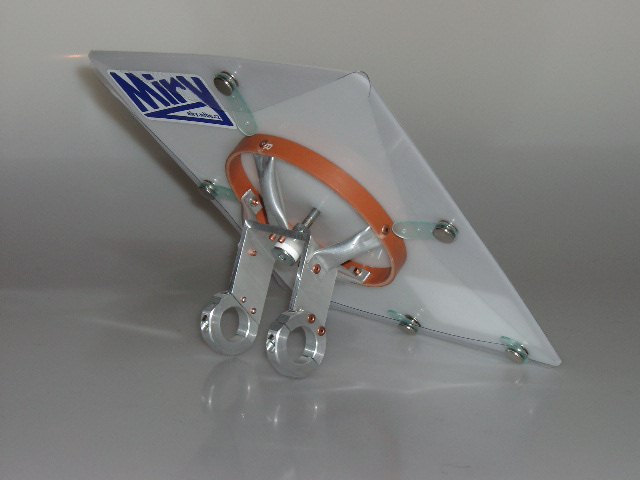Tips for navigating on the MTB
1. Get yourself a mapboard.
A
rotating mapboard allowing you to always have your map oriented makes a big difference to your navigating speed and error rate. There are several options available, try:
| Miry Mapboards | WindChill Mapholder | |
 |
 |
2. Mark your position on the map.
It can be confusing and slow, and not to mention sometimes dangerous, trying to find your last location on the map every time you glance down. There are several methods of marking your location so your eyes are immediately drawn to the right spot on the map:
i. Use a bit of blue tack on your mapboard. This is easily moved from one spot to another as you travel along. This is less effective if it is raining though. It is also easy to lose the blue tack when refolding or changing maps, so stick a big lump to your bars so you can easily break a fresh bit off.
ii. If you have a metal mapboard, or if you cut a thin sheet of metal to stick to the base of your existing mapboard, a strong magnet is also effective. The disadvantage of this system is that it won’t work if you are using large, folded maps; and it may interfere with a compass if you have one mounted to the mapboard.
3. Knowing your distances.
Get in the habit of noting the distance to the next waypoint and watching your cyclecomputer. It is very easy to overshoot a waypoint, particularly if it is in the middle of a fun downhill section…not so much fun if at the bottom you discover you should have turned left halfway down, and then have to climb back up!
4. Look at the contours!
The short steep way is often slower than the longer, flatter route. Even if it is quicker, you need to balance your energy levels and it may sap too much strength going the short way and cost you later in the race.
5. Think ahead!
At every opportunity, look and plan your route ahead. If you have a few kilometres of straight riding, use this time to plan that tricky route later on in the race.
6. Don't ride faster than you can navigate!
Remember, unless you are an exceptional navigator it is highly unlikely that you can navigate as fast as you can ride. So don’t be afraid to take it a bit slower if you have too. Being a little slower but accurate is far better than being fast and inaccurate.
7. Share the joy!
If you are racing in a team, spread the navigation tasks amongst the team. For example, one person navigates with the map and communicates to the team what is coming up, one person concentrates on measuring distances travelled, between waypoints, another person can be watching for features or tracks etc.


